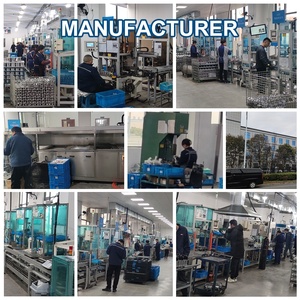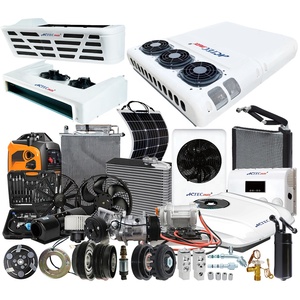
All categories
Featured selections
Trade Assurance
Buyer Central
Help Center
Get the app
Become a supplier

(941 products available)














































Compressors are the heart of any air conditioning system in a car. They compress refrigerant vapor and circulate it through the system. The type of compressor used in an auto air conditioning system can affect the performance, efficiency, and reliability of the A/C.
Compressors differ in their mechanism of operation and the type of drive motor they use. For the mechanism of operation, Auto air conditioning compressor for Peugeot 206 cc can be:
Understanding the specifications of auto air conditioning compressors for Peugeot 206 CC is important for both business buyers and end users. Here are some key specifications to consider:
Compressor Type
Peugeot 206 air conditioning compressors are available in different types.
Refrigerant Type
R-134a is the refrigerant used by the Peugeot 206 ac compressor. This is a common standard refrigerant used in many car models.
Voltage
The compressor is powered by the car's electrical system. It requires a voltage of 12V.
Compressor Oil
Polyalkylene Glycol Ether (PAG) is the type of oil used in the compressor. This oil is important for lubrication and should be maintained at the recommended level.
Cooling Capacity
The cooling capacity of the compressor is determined by its displacement. For the Peugeot 206, the compressor has a displacement of 90-120 cc/rev. This gives it the ability to cool air for different models of the car.
Mounting Type
The compressor is mounted on the engine using a bolt and pulley system. This makes it easy to replace when it is faulty.
Clutch Type
The compressor has a magnetic clutch that is controlled by the car's air conditioning system. The clutch engages and disengages the compressor based on the system's demand for cooling.
Warranty
Most manufacturers offer a warranty period of 12 to 24 months on the compressor. This protects the buyer in case of any manufacturing defects.
These specifications may vary slightly depending on the model and year of the Peugeot 206. It is important to select a compressor that is compatible with the specific model of the car.
Here are some maintenance tips for ensuring the proper functioning and longevity of the auto air conditioning compressor:
Regular Inspection
Check the compressor and its components regularly for any signs of wear, damage, or leaks. Early detection can prevent expensive repairs.
Keep it Clean
Ensure the compressor and its surrounding area are clean and free of dirt and debris. A clean compressor works efficiently and lasts longer.
Check the Belts
The compressor is driven by belts from the engine. Check these belts regularly for any signs of wear or damage and replace them if necessary.
Use the A/C Regularly
Using the air conditioning system at least once a week is recommended, even in colder months. This keeps the compressor lubricated and prevents seals from drying out.
Monitor Performance
Keep an eye on the performance of the air conditioning system. If the cooling is not as expected, it could mean a fault in the compressor.
Professional Servicing
Get the air conditioning system serviced professionally at recommended intervals. Experts have the right tools and knowledge to maintain and repair the system properly.
Use Recommended Oil
Use only the oil recommended by the manufacturer for the auto air conditioning compressor. Using the wrong type can damage the compressor.
By adhering to these maintenance tips, the auto air conditioning compressor will function optimally, providing a cool and comfortable ride in all weather conditions.
Selecting a proper compressor for auto air conditioning requires understanding the components and factors that influence the choice.
Replacing an AC compressor can be a challenging task. Here are the steps to follow when replacing the auto air conditioning compressor for Peugeot 206 cc.
Safety precautions:
Before starting the replacement, ensure to read the manufacturer's service manual. This will provide more accurate guidelines. Also, disconnect the battery and drain the refrigerant to avoid injuries.
Access the compressor:
To access the compressor, remove any components blocking it. This may include the air intake duct, engine cover, or cooling fan.
Disconnect the electrical connector:
There is an electrical connector on the compressor. Disconnect it to disconnect the power supply to the compressor.
Remove the drive belt:
Use a wrench to loosen the tensioner and remove the drive belt from the compressor.
Drain the oil:
Place a drain pan under the compressor and remove the drain plug. This will help to drain the oil from the compressor.
Disconnect the hoses:
Use a wrench to loosen the fittings and disconnect the high-pressure and low-pressure hoses from the old compressor.
Remove the mounting bolts:
Remove the bolts holding the compressor in place. This will allow the compressor to be removed from the mounting brackets.
Remove the old compressor:
Carefully slide the old compressor out of the engine bay and remove it from the mounting brackets.
Install the new compressor:
Slide the new compressor into place and secure it to the mounting brackets. Then, install the mounting bolts and tighten them to the manufacturer's specifications.
Reconnect the hoses:
Reconnect the high-pressure and low-pressure hoses to the compressor. Then, tighten the fittings to ensure a proper seal.
Drain and fill the oil:
Follow the manufacturer's instructions and fill the new compressor with the appropriate amount of oil.
Reinstall the drive belt:
Place the drive belt onto the pulleys of the new compressor. Ensure it is properly aligned and tensioned according to the manufacturer's specifications.
Reconnect the electrical connector:
Reconnect the electrical connector to the compressor, ensuring a secure connection.
Reassemble the components:
Reinstall any components that were removed to access the compressor, such as the cooling fan, air intake duct, and engine cover.
Refill the refrigerant:
Refill the system with the recommended amount of refrigerant. Use a manifold gauge set to ensure the correct pressure and performance.
Reconnect the battery:
Reconnect the battery and ensure all electrical connections are secure.
Test the air conditioning system:
Start the engine and test the air conditioning system to ensure proper cooling and functionality. Check for any signs of leaks or unusual noises.
Q1. What are the signs of a failing auto air conditioning compressor?
A1. The compressor is very important for the air conditioning system of the Peugeot 206 CC, so there will be noticeable signs when it malfunctions. The air conditioner will either blow hot or warm air, or the airflow may be weak. There may also be strange noises like grinding, rattling, or squealing when the compressor is running. Other signs include visible leaks or wet spots under the car, the air conditioner cycling on and off frequently, and the compressor clutch not engaging or disengaging.
Q2. Can the compressor of the air conditioning be replaced?
A2. Yes, the compressor can be replaced. However, it is important to ensure that the replacement compressor is compatible with the Peugeot 206 CC model.
Q3. How long does it take to replace a compressor?
A3. The time taken to replace a compressor depends on the mechanic's skill level and the compressor's location. It may take a few hours to a day to replace an auto air conditioning compressor for Peugeot 206 CC.
Q4. Can I use a second-hand compressor?
A4. It is advisable to use a new compressor when replacing the old one. However, using a reconditioned or second-hand compressor is acceptable as long as it is in good condition and the airflow quality is guaranteed.